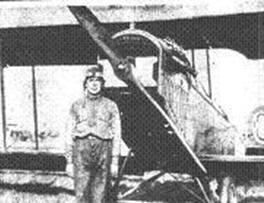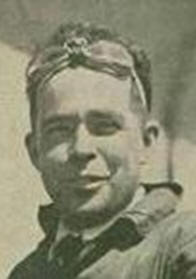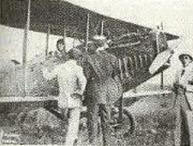|
After receiving
additional aviation training, he was commissioned a Second Lieutenant
and assigned to the ''First Marine Air Squadron'' which deployed to
France
as the newly renamed 1st Marine Aviation Force in July 1918. There Rigau
Carrera and his unit provided bomber and fighter support to the Navy's
''Day Wing, Northern Bombing Group''. While serving in First Marine Air
Squadron, Rigau Carrera became the first Puerto Rican to pilot a
fixed-wing aircraft and the first Hispanic fighter pilot in the Marines.
 |
|
Historical
Flights
In 1918,
after the war, the ship in which Rigau Carrera and his fellow
Marines were docked in
Yorktown,
Virginia. While on leave, he met
Bertha Dunston (1900–1989), who became his wife in 1919 and with
whom he was to have three children, Felix (1921–1995), Carmen
(1923-), and Jaime (1925–1970).
He was
assigned to the US Naval Aviation Detachment, first at
Minneapolis, MN, and
then at Seattle, WA, by the end of November 1918. Rigau
Carrera returned to Puerto Rico
and made it clear to everyone that knew him that his main
objective was to be able to someday own his own and fly his own
aircraft. Consequently, his four brothers helped him financially
to buy his first aircraft, a Curtiss JN-4, which he bought in
1919.
Rigau
Carrera piloted his first flight in Puerto Rico, flying out of Camp Las Casas, the exact area
where Residencial Las Casas is currently located, becoming the
first Puerto Rican pilot to do so. At the time, the area was
used by the military as an air base and it was also
Puerto Rico's first commercial airport, and Rigau
Carrera was allowed to perform his historic flight from the air
field.
|
| Rigau Carrera
poses in front of his aircraft a Curtiss JN-4 |
|
| |
Rigau Carrera then
started using the air base frequently, for exhibition flights and to
carry paying passengers on sightseeing trips. He became a national hero
in Puerto Rico during the 1920s,
traveling to many Puerto Rican cities by air. The local town people
celebrated his landings with live music and fireworks and he became
known as "The Eagle of Sabana Grande".
In 1931, Rigau
Carrera was given a license by San Juan's mail system authority to deliver mail via air
mail throughout the island, becoming the first pilot to fly on air mail
carrying duties in Puerto Rico. Rigau
Carrera then established a system similar to the one used by the
airlines today, where he would fly people from one point of the island
to another, with paying customers on board. Not all of his career went
without problems, as Rigau Carrera almost lost his life during flights
twice, once in San German and another time in Guanica.
Later
Years
Rigau Carrera
settled in Gloucester, Virginia
in the early 1920s. He lived with his family in an old Abingdon Glebe
School House and constructed a building to house a flour mill and other
enterprises. Rigau Carrera founded the Rigau Concrete Works which
manufactured a wide variety of items to meet the industrial needs of the
developing county.
Besides concrete
blocks, he cast septic tanks, culverts, burial vaults and yard
furniture. Rigau Carrera and his wife Bertha, who were certified
undertakers, established a funeral home. He amassed a fortune as the
owner of a funeral home and a concrete factory.
When the
United States entered World War ll,
Rigau Carrera joined the Merchant Marines and served throughout the war
years. During these years, Felix and Bertha divorced. He met and married
Estella Martins from the Azores of Portugal with whom he had three more
children, Felix, Philip, and Maria.
On October 13,
1954, Rigau Carrera died at the age of 70 and was buried with full
military honors at Abingdon Episcopal Church Cemetery. His native
hometown, Sabana Grande, named a street ''Calle Felix Rigau Carrera'' in
his honor.
Awards and
recognitions
Among 2nd Lt.
Felix Rigau Carrera's decorations and medals were the following:
*World War I
Victory Medal,
Badges:
*Naval Aviator Badge
|




